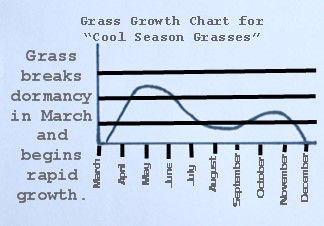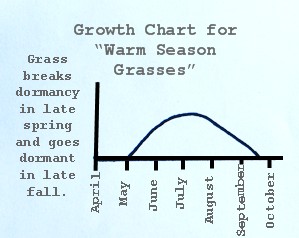Presenters came from: China, Japan, Denmark/Spain, Germany, Australia, and the United States of America. Zhao Hai (CIB) and Eric Lam (Rutgers, NJ), along with Jay Cheng (NCSU) organized the event. I had the privelege of attending thanks to funding from the Utah Water Research Laboratory and invitation from Dr. Louis Landesman. I presented on our lab's work using duckweed to remove phosphorus from the Wellsville Municipal Sewage Lagoons (56 acres and 0.5 MGD). I also contributed to Dr. Landesman's presentation on duckweed growth models.
In my presentation, "Understanding a Duckweed System in a Temperate Climate from Harvest to Disposal," I summarized the need for a phosphorus-removing duckweed system, the expected biomass production (up to 6 tons(dry)/acre) and phosphorus removal (95% removal with 75% contained in plant biomass), as well as the work from Maureen Kesaano and several undergraduate students looking into using duckweed to produce methane (105 L-CH4/kg(dry duckweed)), 100 g-ethanol (127 mL)/kg-duckweed w/ 19% starch), or animal feed comparable to alfalfa and corn silage with 23% protein. My preferred use would be to land apply all the liquid effluent as well as the harvested duckweed as compost to grow either 30,000 bushels of corn, 430 tons alfalfa, or 10,000 bushels of wheat. The biomass and fuel productions was below the estimates of other presenters doing work in Chengdu and North Carolina. Hence, I believe our estimates are realistic and conservative. Furthermore, the other universities have taken time to determine which species of duckweed would give the highest yields; whereas, we simply used the native duckweed on the lagoons in Cache Valley.
Regarding my contribution to Dr. Landesman's presentation "Modeling the Growth of Duckweed Populations," the number one finding was that the duckweed in our area experiences some of its highest growth rates in the spring when temperatures are lowest. None of the models were able to replicate this finding. Instead, the temperature function in each model had to be inverted and the optimum temperature changed to 7.5 degC in order to produce acceptable predictions in the Spring. This finding is not unique. Other limnology studies find that phytoplankton populations thrive depending on different variables at different times of the year and therefore specific models need to be developed depending on the season.
I also observed that the turfgrass in my yard is greenest in the Spring and Fall, but under stress in the Summer--similar to the duckweed plants. Upon closer inspection, I found that the growth curves for cold-season turfgrass is the inverse of the curve for warm-season turfgrass. Researchers attribute the grasses ability to grow rapidly in the Spring to the plants ability to utilize the nutrient reserves stored up during the winter. I believe this finding compliments an observation made by the duckweed researchers at North Carolina State University under the direction of Dr. Jay Cheng--who also attended this conference and emphasized their finding which I refer to as "endogenous growth."
Unlike "endogenous decay" which decreases cell mass as bacteria utilize their nutrient reserves; "undogenous growth" increases cell mass by using nutrient storage. Dr. Cheng pointed out the duckweed continued to increases biomass despite existing in Nitrogen and Phosphorus deficient water due to the fact that they were able to use the N and P stored in their biomass. For information about this finding, as well as some useful modeling information, I refer you to their report:
Chairprapat, S., Cheng, J.J., Classen, J.J., and Liehr, S.K. "Role of Internal Nutrient Storage in Duckweed Growth for Swine Wastewater Treatment." Transactions of the ASAE (2005). pp. 2247-2258.
 Figure 3: Inverse relationship between duckweed growth rate and temperature. Opposite what most studies predict but inline with cold-season grass growth curves (see below).
Figure 3: Inverse relationship between duckweed growth rate and temperature. Opposite what most studies predict but inline with cold-season grass growth curves (see below). Figure 2: Growth curve for cool-season grasses w/ highest growth during the Spring and Fall--shows similar growth curve as duckweed in Cache Valley (Utah).
Figure 2: Growth curve for cool-season grasses w/ highest growth during the Spring and Fall--shows similar growth curve as duckweed in Cache Valley (Utah). Figure 4: Growth curve for warm season grasses with highest growth in summer--as expected for most duckweed studies (excluding Cache Valley (Utah)).
Figure 4: Growth curve for warm season grasses with highest growth in summer--as expected for most duckweed studies (excluding Cache Valley (Utah)). Figure 5: Model predictions improved (as seen here with Driever's model) after inverting the temperature function for the Spring season--yellow shaded region.
Figure 5: Model predictions improved (as seen here with Driever's model) after inverting the temperature function for the Spring season--yellow shaded region.Duckweed growth models:
Driever S.M., Nes E.H.v., Roijackers R.M.M. (2005) Growth limitation of Lemna minor due to high plant density. Aquatic Botany 81:245-251.
Lasfar S., Monette F., Millette L., Azzouz A. (2007) Intrinsic growth rate: A new approach to evaluate the effects of temperature, photoperiod and phosphorus-nitrogen concentrations on duckweed growth under controlled eutrophication. Water Research 41:2333-2340.
Frédéric M., Samir L., Louise M., Abdelkrim A. (2006) Comprehensive modeling of mat density effect on duckweed (Lemna minor) growth under controlled eutrophication. Water Research 40:2901-2910.
Landesman L., Parker N., Fedler C., Konikoff M. (2005) Modeling duckweed growth in wastewater treatment systems. Livestock Research for Rural Development 17 (6) .
Driever S.M., Nes E.H.v., Roijackers R.M.M. (2005) Growth limitation of Lemna minor due to high plant density. Aquatic Botany 81:245-251.
Lasfar S., Monette F., Millette L., Azzouz A. (2007) Intrinsic growth rate: A new approach to evaluate the effects of temperature, photoperiod and phosphorus-nitrogen concentrations on duckweed growth under controlled eutrophication. Water Research 41:2333-2340.
Frédéric M., Samir L., Louise M., Abdelkrim A. (2006) Comprehensive modeling of mat density effect on duckweed (Lemna minor) growth under controlled eutrophication. Water Research 40:2901-2910.
Landesman L., Parker N., Fedler C., Konikoff M. (2005) Modeling duckweed growth in wastewater treatment systems. Livestock Research for Rural Development 17 (6) .

No comments:
Post a Comment
Note: Only a member of this blog may post a comment.